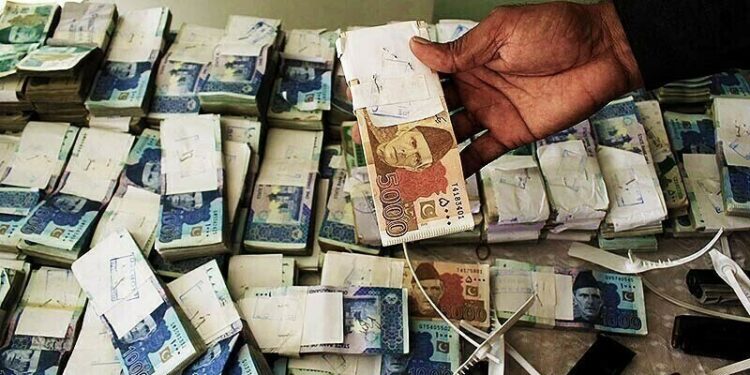The federal government of Pakistan is preparing to take a bold step in its ongoing campaign to curb cash-based transactions and push the country towards a more documented, digital economy. In a significant policy shift, the government is expected to announce a dual pricing mechanism for cash and digital payments across multiple sectors—including the critical petroleum industry—in the federal budget speech on June 10, 2025.
This initiative is a central part of the government’s wider economic reforms aimed at improving tax documentation, reducing money laundering, and expanding the tax base. The upcoming fiscal year 2025-26 could see the implementation of these changes, spearheaded by Finance Minister Muhammad Aurangzeb, who has repeatedly emphasized the importance of digitizing the economy in recent weeks.
Dual Pricing Strategy: Fuel Sector to Lead the Transition
One of the most notable elements of this new policy is the introduction of dual pricing at petrol stations across the country. According to senior officials familiar with the matter, all petrol pumps—from Chaman to Khyber and Karachi to Azad Kashmir—will be legally required to offer multiple digital payment options, including:
- QR codes
- Debit and credit cards
- Mobile wallets
- Internet banking interfaces
Under this system, government-fixed petroleum prices will apply only to digital transactions, while cash payments will include a surcharge of Rs 2 to Rs 3 per liter. Consumers will still have the freedom to pay in cash, but the added cost is designed to nudge them toward digital methods.
💬 “Consumers can still use cash if they choose, but digital transactions will be incentivized through better pricing,” said a senior official involved in policy planning.
The Government’s “War on Cash”: A Long-Awaited Reform
This move is part of the government’s broader effort to reduce the undocumented economy, which has long been a barrier to sustainable growth and effective taxation. For years, Pakistani authorities have struggled to bring retail and wholesale businesses into the tax net, with Federal Board of Revenue (FBR) failing to implement effective documentation despite multiple attempts, including:
- Point of Sale (POS) integration drives
- Real-time invoice tracking systems
- Voluntary disclosure schemes
- Fixed tax regimes for retailers
The dual pricing model, however, is considered a pragmatic and enforceable measure because it creates natural incentives for both businesses and consumers to shift towards traceable digital payments.
Technical Framework and Consultation Underway
Sources confirm that at least three high-level meetings have been held between Finance Minister Muhammad Aurangzeb and key stakeholders, including:
- Federal Board of Revenue (FBR)
- Ministry of Petroleum
- Commercial banks
- Financial technology companies
- Independent economic consultants
These consultations are focused on resolving the technical, administrative, and legal challenges associated with implementing dual pricing and encouraging digital transactions.
Some of the core issues under discussion include:
- Updating point-of-sale software to handle two price structures
- Creating a central payment reconciliation system
- Expanding internet and mobile network coverage in rural areas
- Collaborating with private sector fintech firms to scale QR and card payment options
Bottom-Up and Top-Down Strategy: Comprehensive National Coverage
The campaign is structured around a dual implementation approach:
1. Top-Down Measures
- Imposed at fuel stations and manufacturing units
- Digital-only discounts and cash surcharges enforced by regulation
- Sales tax reforms targeting importers and registered manufacturers
2. Bottom-Up Incentives
- Encouraging consumers to use cards or mobile payments for discounts
- Financial literacy and awareness campaigns
- Partnerships with digital wallet companies offering cashback or promotions
By working both ends of the transaction chain, the government hopes to generate momentum that makes cash transactions less attractive and increasingly obsolete.
General Sales Tax (GST) Adjustments to Support Digital Economy
In addition to fuel prices, the government is set to introduce differential GST rates for business-to-business transactions:
- Digital payments will attract a standard 18% GST
- Cash transactions will face an additional 2% GST surcharge, effectively bringing the total to 20%
This move is expected to discourage under-the-table dealings among manufacturers, wholesalers, and retailers. The goal is to break the chain of undocumented transactions that often begins at the import or production level and trickles down to retail.
📊 According to FBR estimates, more than 60% of retail transactions in Pakistan are still conducted in cash, which severely limits tax collection and economic transparency.
Relief for Salaried Class Also on the Agenda
While the dual pricing and anti-cash measures are key structural reforms, the federal budget is also expected to include minor relief measures for the salaried class. According to insiders, a modest reduction of 1% to 1.5% in income tax rates for salaried individuals is likely.
This proposed change comes under direct instructions from Prime Minister Shehbaz Sharif, who has reportedly emphasized the need to ease the financial burden on tax-compliant citizens, especially those facing unusually high deductions compared to the benefits they receive.
Although the relief may not be substantial in monetary terms, it serves an important political and moral purpose—acknowledging honest taxpayers while cracking down on sectors that consistently evade documentation.
Potential Challenges and Implementation Hurdles
While the government’s intent is clear, several practical and political challenges could slow down the transition:
1. Infrastructure Gaps
Many rural areas lack reliable internet access, making digital payments infeasible for now. This could create uneven access to discounted fuel prices and other goods.
2. Resistance from Businesses
Retailers and fuel station owners may resist dual pricing, fearing loss of profits or complexity in daily transactions. Without strict enforcement, compliance could remain patchy.
3. Public Acceptance
A significant portion of the population still trusts cash more than digital systems, largely due to:
- Fear of fraud
- Lack of digital literacy
- Limited access to smartphones or bank accounts
4. Legal and Technical Bottlenecks
Aligning existing laws, tax codes, and technology platforms to support dual pricing requires coordinated effort and rapid bureaucratic responsiveness—a known weak point in Pakistan’s public sector.
A Crucial Step Toward Economic Modernization
Despite these hurdles, the government’s decision to pursue a dual pricing system is being hailed as a bold and much-needed reform. By creating real economic incentives for digital payments, the policy has the potential to:
- Boost formal economic activity
- Increase tax revenue
- Reduce the circulation of black money
- Strengthen anti-money laundering efforts
- Modernize the financial ecosystem
If implemented effectively, this reform could mark a turning point in Pakistan’s long struggle to transition from a cash-reliant society to a digitally documented economy.
Conclusion: Digital Transformation of Pakistan’s Economy in Motion
The upcoming federal budget for fiscal year 2025-26 is set to deliver a powerful message: Pakistan is serious about embracing a digital financial future. The proposed dual pricing strategy, combined with targeted tax reforms and stakeholder consultations, reflects a decisive move toward financial inclusion and transparency.
As Finance Minister Muhammad Aurangzeb prepares to unveil the budget on June 10, 2025, all eyes will be on the specifics of this digital push. Whether it leads to long-term structural transformation or falters due to resistance and implementation barriers remains to be seen—but one thing is clear: the war on cash has officially begun.

























